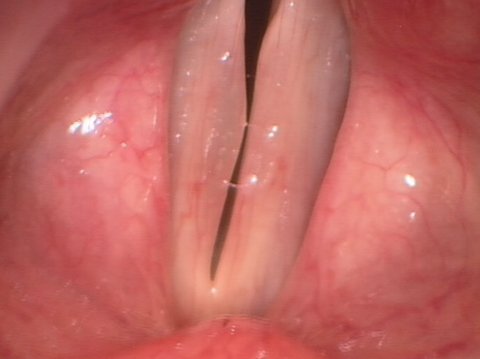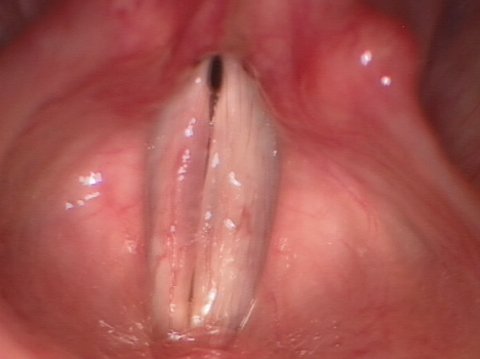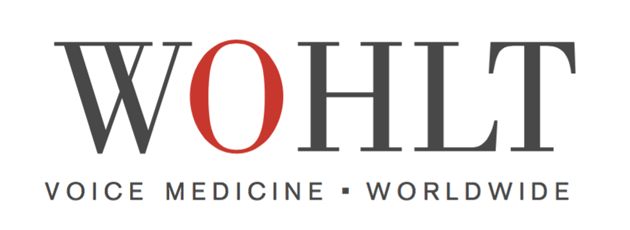When is surgery for Reinke’s edema indicated?
Indications for surgery of Reinke's edema:
- Hoarseness, deep voice
- Narrowing of the airways
- Parallel occurrence of Reinke's edema with leukoplakia
Reinke's Edema, also called polypoid corditis, usually manifests as a columnar swelling along the entire vocal fold. Although Reinke's Edema can occur unilaterally (on just one side), the lesion is normally found on both sides (bilateral).
It is only in the early stages of Reinke's Edema that voice therapy can compensate for the voice disorder. In moderate to severe cases of Reinke's edema, sufferers are almost always recommended to opt for surgery due to their pronounced hoarseness.
The indication for a phonosurgical intervention is rendered based on both subjective and objective symptoms and/or limitations. The cardinal symptom is hoarseness of a more or less marked to significant severity, which is caused by interference in the ability of the vocal folds to vibrate.
Usually, the degree of hoarseness increases proportional to the extent of the edema.
An overwhelming percentage of women suffer from a significant lowering of the average speaking pitch. They often report that they are told they have a “man’s voice” on the telephone.
Another indication for surgery of Reinke's edema is when the airway obstruction is associated with shortness of breath. More extensive Reinke's edema can impair the airways so severely that the patient makes abnormal noises with breathing (inspiratory stridor). When patients with this condition contract a serious respiratory infection, bronchitis or even bronchopneumonia, they may develop a severe disorder of ventilation or narrowing of the airways. In such cases, the surgical indication, i.e. the necessity for a surgery is due to the significant dyspnea (shortness of breath).
Surgery will also become necessary, when Reinke's edema occurs in conjunction with whitish lesions on the surface of the vocal folds, called leukoplakia.
Even though Reinke's edema does not constitute a precancerous lesion, leukoplakia can indeed by regarded as a potential precursor to a malignant disease. In the event that leukoplakia is superimposed intercurrently on Reinke's edema, the indication for surgery should likewise be rendered.
Reinke's edema before surgery

Reinke's edema after surgery

Speech recording: Reinke's edema before surgery
Speech recording: Reinke's edema after surgery

How is surgery for Reinke’s Edema performed?
Reinke's Edema is a disease of the subepithelial space, in other words, a disease of the tissue layer underneath the surface of the vocal cords. That is why a surgical approach is necessary that enables access to the deeper layers of tissue.
The surgical technique favored by Dr. Wohlt involves plastic reconstructive surgery of vocal folds: the diseased vocal cords are surgically managed to make each vocal fold capable of symmetrically vibrating against its counterpart. Only in this way can a pleasant, resonant voice be achieved.
The first step in the procedure is to carefully open the vocal fold body along is entire length and gently excise the excess gelatinous fluid produced by Reinke's edema.
This is commonly done using microinstruments and a microsuction tube. Once the surgeon is satisfied that the vocal fold has been returned to its desired shape after removing any excessive portions of Reinke's edema, the excess epithelium, in other words the redundant skin covering the vocal folds is trimmed off by careful microsurgery. For these steps, the surgeon frequently relies on techniques from plastic surgery (wedge excision, Z-plasty etc.). Afterwards, the flap is draped by pressure compression.
The use of tissue adhesives, even in diluted form, is advised against because these can frequently lead to adhesions and consequently to scaring. By virtue of the endogenous fibrin produced by the body itself, pressure compression is normally completely sufficient for flap coverage of the tissue defect.
Reinke's edema before surgery
Reinke's edema after surgery

What happens during the postoperative phase after surgery for Reinke’s edema?
After surgery, 10 to 14 days of voice rest must be strictly maintained. This is the phase during which the wound heals and the smaller tissue defects undergo re-epithelialization.
During this period, voice rest must be strictly maintained, not even whispering is allowed. It goes without saying that smoking should likewise be abstained from entirely during this wound healing phase. Drinking alcohol should also be refrained from given the associated bleeding risk.
After a period of voice rest, work on intensive voice therapy with a specialized therapist should begin.
This is especially important in the postoperative phase because patients with vocal fold edema have ingrained vocal pressure patterns acquired over many years.
Postoperatively, these pressure patterns get in the patients' way of achieving a nice resonant voice. Therefore, treatment with vocal function exercises should always follow surgery for Reinke's edema. The duration of therapy is dictated by the individual's response to the exercise treatment.

Special Notes on Surgery for Reinke’s Edema
A warning against an antiquated surgical method is hereby given in connection with surgery for Reinke's edema. This refers to a procedure called "stripping" whereby the diseased mucous membrane is stripped off the vocal fold body with a forceps.
The technique was used very frequently in the past and, regrettably, is still in use today.
Since it involves radical removal of the mucosal layers capable of vibration and thereby also of the sound-producing matrix of the vocal folds, the resultant postoperative voice is rough, breathy and often abnormal.
The method of complete excision with microscissors belongs to these antiquated operative methods.
Although the attempt there is to create a smooth vocal fold margin, excision of the vibration-enabling fluid leads to a loss of all tonal beauty in the voice. What remains is also a breathy and often usually unnatural sounding voice.




